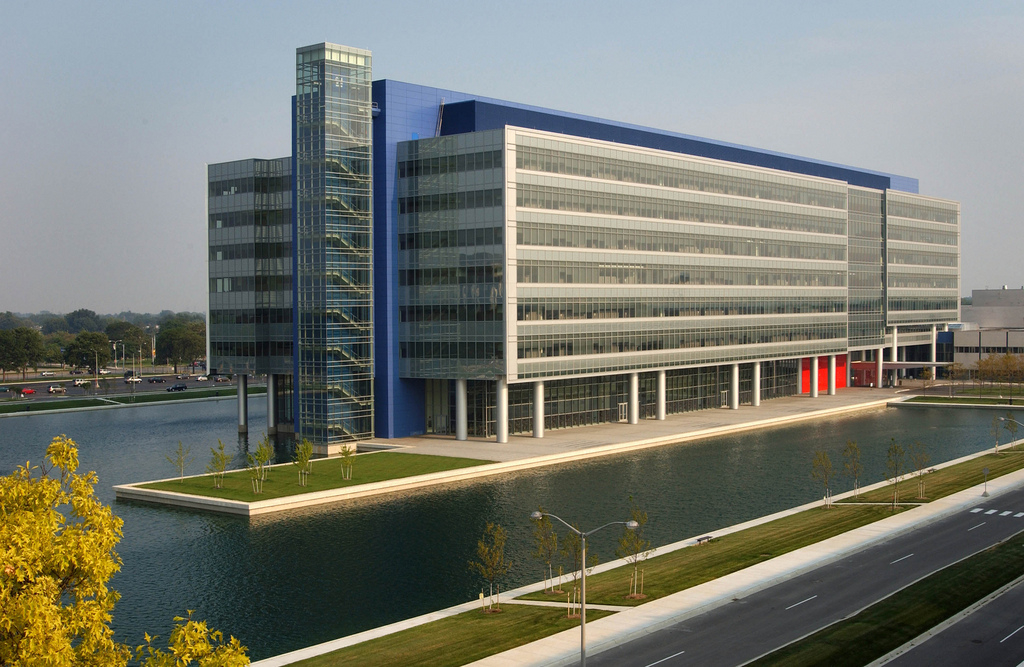The General Motors Technical Center in Warren, Michigan, was recently honored as a National Historic Landmark by U.S. Secretary of the Interior Sally Jewell and National Park Service Director Jonathan Jarvis. The National Historic Landmarks Program was established in 1935 to recognize sites that are important to the nation as a whole and this latest designation puts the Tech Center in an exclusive group of around 2,500 U.S. National Historic Landmarks nationwide.
The tech center was designed in the early 1950s by architect Eero Saarinen, a man recognized as one of the most important modernist designers of the post-World War II period in the United States. According to the historic designation, “The GM Tech Center marked Saarinen’s emergence onto the national stage and was the first of his four influential suburban corporate campuses that represented a sea change in American business facilities. The GM campus represents Saarinen’s work not just as a creator of buildings but also as the planner/designer of total environments.”
The Tech Center was one of the most prominent corporate campuses of its day, and one that helped set the design standard for post-World War II architecture. Comprised of 25 buildings on 330 acres of land, the $100,000,000 (in 1956) Tech Center project expressed the power of GM’s combined brands and was seen as the embodiment of the growing prosperity of America at the time. Architect Saarinen broke new ground by working directly with GM’s Styling staff on the “total environment” including the center’s materials, construction methods, landscape, furniture, furnishings, and artwork too. The cooperative arrangement between Saarinen and the Styling staff helped signify the mission of the Tech Center in the design itself. The architect employed steel framing throughout the facility to help express automobile production assembly-line regularity in the design of the buildings. Saarinen also created many influential new building technologies in the process, like the complex’s sandwich panel wall system, the double-glazed exterior masonry, the high-velocity HVAC system, and the neoprene window gaskets that were inspired by automotive windshield construction.
Although Saarinen’s career was cut short when he died of a brain tumor in 1961, the Tech Center allowed him to establish himself as a premier architect in the 1950s. As a new national historic landmark, National Park Service Director Jonathan Jarvis noted that the Tech Center will “Educate and inspire Americans with their country’s rich history, as well as drive tourism and boost the local economy.”

